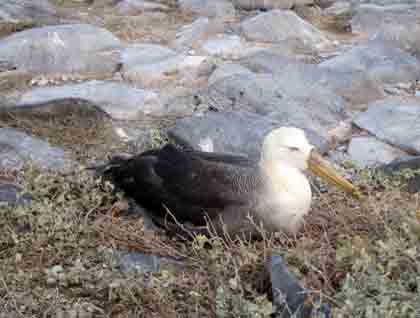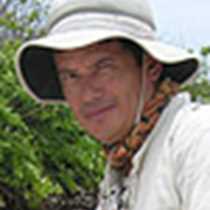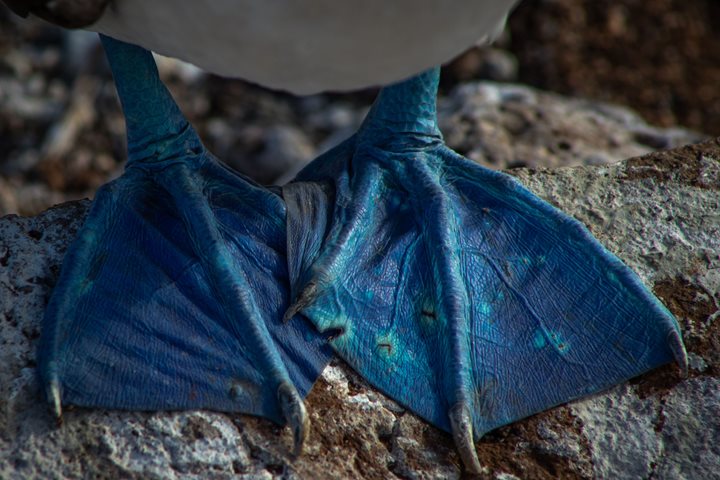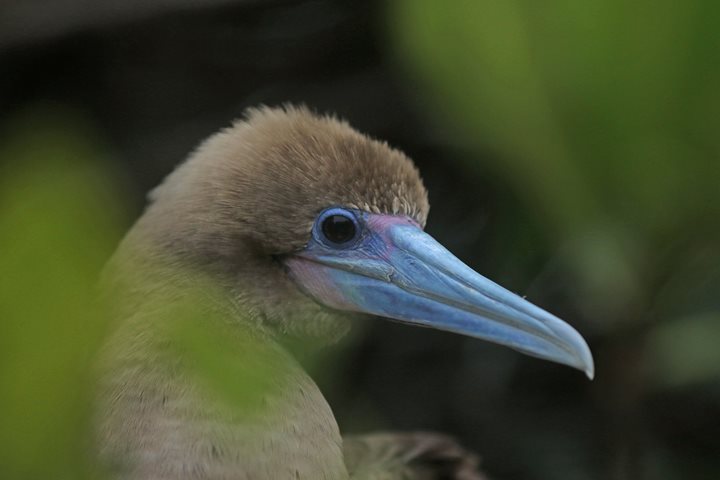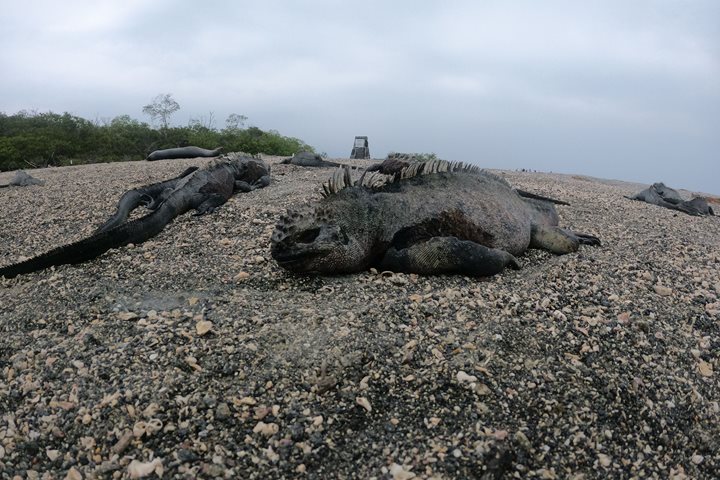Considered the easternmost and oldest island in the Galapagos, Española offers a great number of attractions. It has incredible landscapes, but also an explosion of life that is unlike anywhere else.
Our first complete day in Galapagos began with visiting the eastern part of Española, anchoring just in front of Gardner Bay. With excellent weather conditions, and a very warm ocean, we headed to Gardner Islet to snorkel and swim. We discovered many tropical fish, playful sea lions, stingrays and invertebrates with colorful bodies inhabiting the vertical walls.
After snorkeling, we landed on the beach of Gardner Bay; the white color contrasted with the green bushes and the black bodies of the sea lions. We observed how sea lions interacted with people, as if they were inviting us to play with them in the water. Meanwhile, the mockingbirds called for our attention with their noises and curiosity trying to find some water in our backpacks, to the delight of our guests.
In the afternoon and after a short navigation, the National Geographic Islander was repositioned to Punta Suarez. In the distance it looked to be cloudy and covered with dry vegetation. The Zodiacs landed on a small dock that was full of baby sea lions. We observed many of them in small ponds playing animatedly, jumping from the rocks to the water and then chasing each other. What an experience!
Walking inland, the vegetation changed considerably. We observed small dry trees that looked like bushes due to the lack of water. Some warbler finches and small ground finches called our attention until we finally observed a juvenile waved albatross resting under the bushes, its bill looked a little bit paler than the adults’ and the head was still covered with some fluffy feathers. It remained in that position indifferently while we tried to get some good pictures. In the air we observed two Galapagos hawks flying over our heads and landing on a rock close to us. We had a chance to observe their brown feathers open like a fan of paper and their powerful talons and bills.
It was six o’clock and the last beams of sun we observed on the landscape turned orange, indicating to us that it was time to come back. It wasn’t only us heading back to the National Geographic Islander, there were also a great number of Nazca boobies landing along the cliffs looking for a good place to spend this night. Tired and happy, we won’t forget this beautiful day and the innocence of those beautiful creatures.

